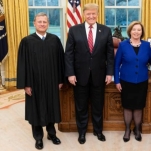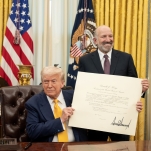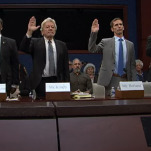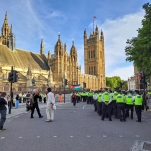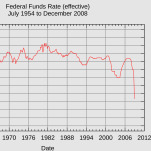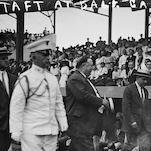How Crossing the Border Became a Crime
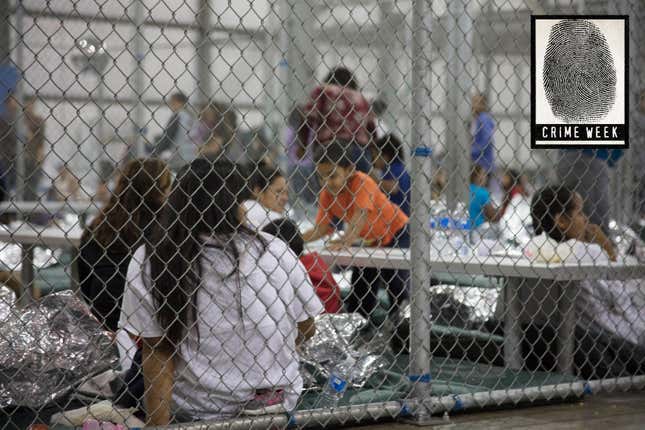

In the wake of the child separation policy at the border, the government’s bizarre legal approach to migration has been thrown into the spotlight. Crossing an invisible line is a crime considered so heinous that ripping children away from their parents, and losing them indefinitely, is apparently justified. Except that this prosecution can be, according to documents reviewed by USA Today “seldom more than a symbolic undertaking,” with immigrants being “sentenced to whatever time they have already spent in the government’s custody and a $10 court fee” before they’re sent for deportation.
Yet while crossing the border without permission is a crime, unlawful presence in the United States isn’t. If you enter legally and overstay your visa, you’re not a criminal; if you sneak across the border, you are. Prosecuting those crimes requires a lot of resources: Half of the total arrests made by the federal government in 2014 were for immigration-related offenses. But more immigrants are now overstaying visas than entering the country unlawfully, according to the Center for Migration Studies. In 2014, 66 percent of those who entered illegally or became undocumented did so by overstaying visas, a commitment of a civil violation rather than a crime.
And that number is growing: Overstays have exceeded the number of illegal border crossings since 2007. In 2017, DHS reported that the number one nationality for visa overstays, among those who entered by air or sea, was Canada, with Brazil, the UK, and China also represented.
Why the difference? Why does U.S. law consider it so much worse to sneak across the border than to overstay a visa—surely, tricking the U.S. government into trusting you with the privileges of a visa and then abdicating your responsibility to leave is at least as grave a transgression as entering without permission? This difference goes back to 1929, and you’ll be shocked, I’m sure, to learn it’s rooted in racism.
The first major law restricting immigration to the United States at all was the infamous Chinese Exclusion Act of 1882, but it’s worth mentioning the Page Act of 1875, too. Page was ostensibly intended to prevent the trafficking of prostitutes and forced laborers from China, but some historians argue that it was more than that: ideas about perceived Chinese immorality and unwillingness to assimilate had been growing for years. The threat of cheap labor from China seems to have pushed Congress into action, too. Congressmen complained that of Chinese workers replacing whites, wailing that “virtue and decency are more valuable than cheap labor, and we cannot afford to have the Chinaman among us”—the classic, inextricable economic anxiety-racism matrix that has forever plagued American politics. Page himself warned about the labor implications of Asian prostitutes taking jobs:
-

-

-

-

-

-

-

-

-

-

-

-

-

-

-

-

-

-

-

-

-

-

-

-

-

-

-

-

-

-

-

-

-

-

-

-

-

-

-

-

-

-

-

-

-

-

-

-

-

-

-

-

-

-

-

-

-

-

-

-

-

-

-

-

-

-

-

-

-

-

-

-

-

-

-

-

-

-

-

-

-

-

-

-

-

-

-

-

-

-

-

-

-

-

-

-

-

-

-

-

-

-

-

-

-

-

-

-







































